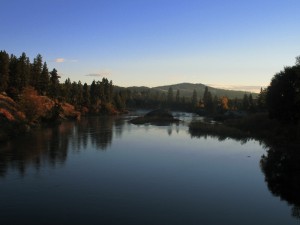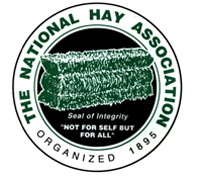 Taylor Gombos
Taylor Gombos
Administrative Marketing Associate
ACX Pacific Northwest, Inc.
The 2013 water outlook for hay growing in the western United States varies from region to region. Some areas have positive outlooks while other areas face full-on water shortages and drought.
In general, water shortages in any farming region can drive up the price of all crops including forage products which require large volumes of water to produce.
Water shortages drive up the cost of water. Expensive water means fewer irrigable acres. Ultimately, water availability determines the amount and variety of hay (e.g. alfalfa, timothy, Sudangrass) to be grown in any given region.
Arizona
According to ACX Regional Acquisition Manager (RAM), Cutter T. Holt, the state of Arizona faces a possible water shortage whenever there is decreased snowpack in the Rocky Mountains. “Growers [sometimes] have to lay-out ground because there is not enough water to plant all acres,” said Holt, “Pray for snow in the mountains!”
“Water is distributed in Arizona by being pumped from underground aquifers, supplied through water district canals, or both,” said Holt.
Overall, winter precipitation has been below normal in Arizona and snowpack has been below average. Drought conditions seem to be the story for Arizona, but it’s not too late in the winter season to make up for a drier than normal winter.
Utah & Idaho
The water supply in this region generally comes from the mountains and, according to ACX RAM, Casey Lovell. “The snow pack in eastern Idaho and northern Utah has been good, “Lovell said, “There is a lot of snow in the mountains, but not in southern Utah.”
Lovell explained that the water situation varies depending on what part of Idaho and Utah you are in. “Eastern Idaho and northern Utah are really good, southern Utah is just so-so, and western Idaho is lighter [on water] than what they normally are. It’s little below par but they’re not in danger,” said Lovell.
Lovell believes the 2013 outlook for both Utah and Idaho is really good. “It looks like we’re going to have a normal year for water. We don’t have any imminent dangers,” Lovell said.
Nevada
The water situation in Nevada for 2013 is average to poor. According to Rex Hartwick who serves as the Business Unit Leader (BUL) for ACX’s Stockton, California hay processing facility, “Snowpack in the western part of the state is about average, but nobody thinks they’re going to get a full water log in those areas.”
In central and northern Nevada, the snowpack is limited despite the fact that they have had good rain and snow. “Runoff and reservoir storage water for Lovelock is looking very poor,” said Hartwick.
California
“In the San Joaquin Valley the only water problem to report is with the Delta Smelt,” according to Hartwick, “but other than that, the valley’s water situation is fairly good.” The Delta Smelt is a protected species of fish which have been the cause of reduced water deliveries to SJV farms in years past.
Hartwick went on to say, “They have pretty good storage in the reservoirs and the snowpack looks about average. From Merced north it looks ok. The west side of the SJV is looking very dry due to the small allotment–water is going to be expensive,” Hartwick said.
The biggest problem with a water shortage in the SJV is that farmers have to rely upon lower quality well water. “It’s more expensive to pump [well water]. They get better yields and lower costs if they can use surface water,” said Hartwick.
Washington
“The Columbian Basin water situation for 2013 is very stable compared to other major irrigation areas,” said ACX Ellensburg Washington BUL, Shaun Harris.
About 3 percent of Columbia River water is designated for farming operations in the Columbia Basin which includes 700,000 acres of alfalfa, corn, potatoes, and apples. Some of these crops rely on water delivery for all twelve months of the year.
“We’ve never seen a shortage in the Basin,” Harris said, “most of the water comes out of the Rockies, and the Columbia Basin has plenty of Water.” Notwithstanding, Harris went on to explain that Ellensburg and Kittitas Valley are actually susceptible to water shortages due to heavy reliance on Cascade Mountain snow pack.
Overall, Nevada and Arizona could be facing dry conditions in various areas. California farmers are in ‘wait-and-see’ mode with regard to their water outlook. Washington, Idaho, and Utah growers are likely to be flush with water as usual.
 ACX アドバイザー
ACX アドバイザー ACX 인사말
ACX 인사말 ACX 快讯
ACX 快讯
